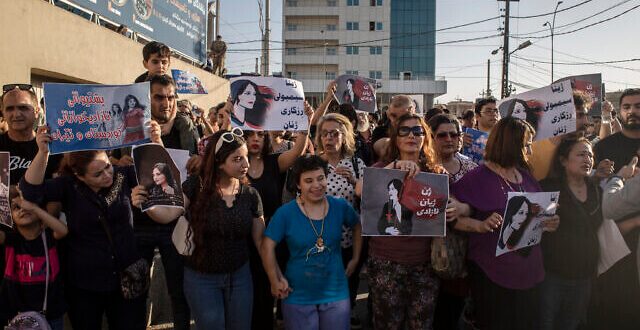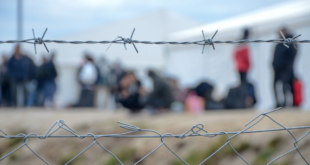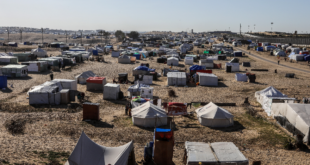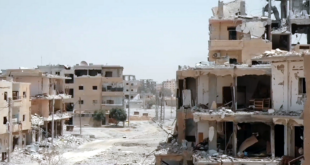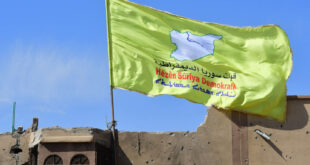Iran intensified its crackdown Tuesday on Kurdish areas in the country’s west amid protests sparked by the death of a 22-year-old woman detained by the morality police as oil workers demonstrated at a key refinery, activists said.
Riot police fired into residential neighborhoods in Sanandaj, the capital of Iran’s Kurdistan province, as Amnesty International and the White House’s national security adviser criticized the violence targeting demonstrators angered by the death of Mahsa Amini.
Meanwhile, some oil workers Monday joined the protests at two key refinery complexes, for the first time linking an industry key to Iran’s theocracy to the unrest. Workers claimed another protest Tuesday in the crucial oil city of Abadan, with others calling for protests on Wednesday as well.
Iran’s government insists Amini was not mistreated, but her family says her body showed bruises and other signs of beating after she was detained for violating the Islamic Republic’s strict dress code. Subsequent videos have shown security forces beating and shoving female protesters, including women who have torn off their mandatory headscarf, or hijab.
From the capital, Tehran, videos emerged showing students at two universities demonstrating and chanting. Some women and girls have marched through the streets without headscarves as the protests continue into a fourth week. The demonstrations represent one of the biggest challenges to Iran’s theocracy since the 2009 Green Movement protests.
“There is just so much anger and frustration in the country that it’s hard to imagine that the current generation of protesters in Iran would be cowed just by the system resorting to its traditional iron fist and trying to put down protests,” said Ali Vaez, an analyst who covers Iran for the International Crisis Group.
Videos posted online by a Kurdish group called the Hengaw Organization for Human Rights showed darkened streets with apparent gunfire going off and a bonfire burning in Sanandaj, some 400 kilometers (250 miles) west of Tehran.
Another showed riot police carrying shotguns moving in formation with a vehicle, apparently firing at homes.
A video posted later Tuesday purportedly showed a massive bullet hole inside the home of one Sanandaj resident, a hole that Hengaw alleged came from a heavy .50-caliber machine gun — the type often mounted on armored vehicles. Another video purportedly showed security forces randomly firing in the air while arresting someone there on Monday.
Videos later Tuesday showed protesters throwing stones and wielding clubs in the city as they confronted security forces, who fired tear gas into the crowd. Hengaw reported a “fierce conflict” there Tuesday night, as well as in the nearby cities of Baneh and Saqqez, Amini’s hometown.
The New York-based Center for Human Rights in Iran posted another video showing what it described as a phalanx of motorcycle-riding security forces moving through Sanandaj.
“They reportedly broke the windows of hundreds of cars in the Baharan neighborhood,” the center said.
Amini was Kurdish and her death has been felt particularly in Iran’s Kurdish region, where demonstrations began Sept. 17 at her funeral there after her death the day before.
Amnesty International criticized Iranian security forces for “using firearms and firing tear gas indiscriminately, including into people’s homes.” It urged the world to pressure Iran to end the crackdown as Tehran continues to disrupt internet and mobile phone networks “to hide their crimes.”
Iran did not immediately acknowledge the renewed crackdown in Sanandaj. However, Iran’s Foreign Ministry summoned the British ambassador over the United Kingdom sanctioning members of the country’s morality police and security officials due to the crackdown.
Iran’s Foreign Ministry called the sanctions “arbitrary and baseless,” even while threatening to potentially take countermeasures against London.
Jake Sullivan, U.S. President Joe Biden’s national security adviser, similarly noted that “the world is watching what is happening in Iran.”
“These protestors are Iranian citizens, led by women and girls, demanding dignity and basic rights,” Sullivan wrote on Twitter. “We stand with them, and we will hold responsible those using violence in a vain effort to silence their voices.”
On Monday, workers held demonstrations in Abadan and Asaluyeh, a key point for Iran’s massive offshore natural gas field in the Persian Gulf it shares with Qatar.
Iran’s state-run IRNA news agency on Tuesday claimed the Asaluyeh demonstration was a strike over wages. Videos of the protests included workers chanting: “This is the bloody year Seyyed Ali will be overthrown,” referring to Iran’s Supreme Leader Ali Khamenei without his Shiite religious title of ayatollah. Workers also said several of their colleagues had been detained by authorities after their protests Tuesday.
On Tuesday, the Contractual Oil Workers Protest Organizing Council claimed another strike at Abadan, posting videos outside of the massive refinery complex in the city near the Iraqi border. The details in the videos correspond with each and to known features of the facility compared against satellite photos taken in recent months.
The council later called on other oil workers to join them in solidarity — potentially raising the stakes further. The council’s contractors typically build oil facilities, so their demonstrations haven’t affected Iran’s oil and gas production. Drawing in other workers potentially could change that.
It remains unclear how many people have been killed or arrested so far in the protests.
An Oslo-based group, Iran Human Rights, estimates at least 185 people have been killed. This includes an estimated 90 people killed by security forces in the eastern Iranian city of Zahedan amid demonstrations against a police officer accused of rape in a separate case. Iranian authorities have described the Zahedan violence as involving unnamed separatists, without providing details or evidence.
Iran’s judiciary spokesman Masoud Setayeshi reportedly said Tuesday that Iran has released some 1,700 people arrested in the recent demonstrations, without offering a total figure for those detained so far.
Meanwhile on Tuesday, Iranian government spokesman Ali Bahadori Jahromi alleged without providing evidence that U.S. sanctions affected Amini’s ability to get medicine for the chronic illnesses she faced. However, an Iranian government report Friday said that she was taking hydrocortisone and levothyroxine — two medicines made in Iran available in pharmacies in the country.
 Eurasia Press & News
Eurasia Press & News
